Sagrada Familia is Barcelona's architectural marvel and the world's longest-running construction project. This iconic basilica, dominating the city's skyline, beautifully blends Moderniste and Naturalist styles. In 2026 it'll finally be complete, marking Antoni Gaudi's 100th death anniversary. The mastermind behind this extraordinary creation, Gaudi left a legacy that continues to inspire architects and awe visitors. Sagrada Familia's intricate design and rich symbolism make it a masterpiece of architectural innovation. Its unique features like the hyperbolic vaults and the facades have captivated millions, sparking curiosity about what makes its architecture truly exceptional. Ready to uncover the secrets behind Sagrada Familia's architectural greatness? Let's dive in!
Why is it taking so long to build?
First off let’s answer the impending question, why is it taking so long to build? The construction has faced its fair share of challenges. From refurbishing century-old sections to relying solely on donations and ticket sales, Sagrada Familia's journey hasn't been easy. The Spanish Civil War left its mark, literally, with significant damage to the structure. World War II and political turmoil in Spain put construction on hold for decades. Even in recent times, COVID-19 brought work to a standstill.
However, modern CAD and construction technology have sped things up. The estimated completion date is now 2026, when Sagrada Familia will become the world's largest Art Nouveau building. While construction has been faster in the last 30 years, the handcrafted details still take time.
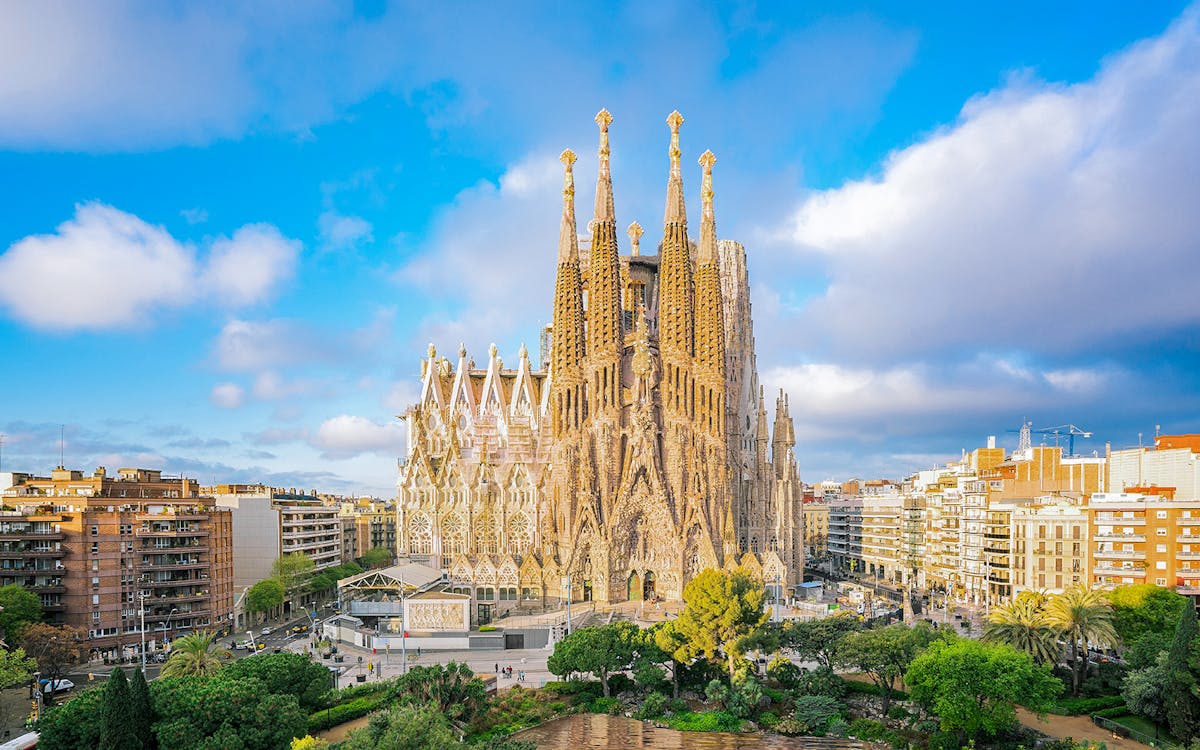
Recommended tickets
Sagrada Familia architects
Eight visionary architects have influenced the architecture of the Sagrada Familia. It all started with Francisco de Paula del Villar in 1882, who initially aimed for a Neo-Gothic design. However, creative differences saw him replaced by the innovative Antoni Gaudí in 1883. Gaudí, only 31 at the time, completely reimagined the basilica, integrating Gothic, Art Nouveau, and Catalan Modernism. He dedicated 43 years to the project, particularly focusing on the Nativity Facade, until his death in 1926. Subsequent architects like Bonet i Garí and Quintana picked up the mantle, with Bonet restoring elements after the devastation wrought by the Spanish Civil War.
Fast forward to the mid-20th century and beyond; notable contributions came from Jordi Bonet and his successor Faulí, the current chief architect. Sculptor Josep Maria Subirachs added his flair to the Passion Facade's dynamic sculptures. Today, it's Faulí's monumental task to crown the basilica's central towers and aim for a 2026 completion, just in time to celebrate a century since Gaudí’s passing.
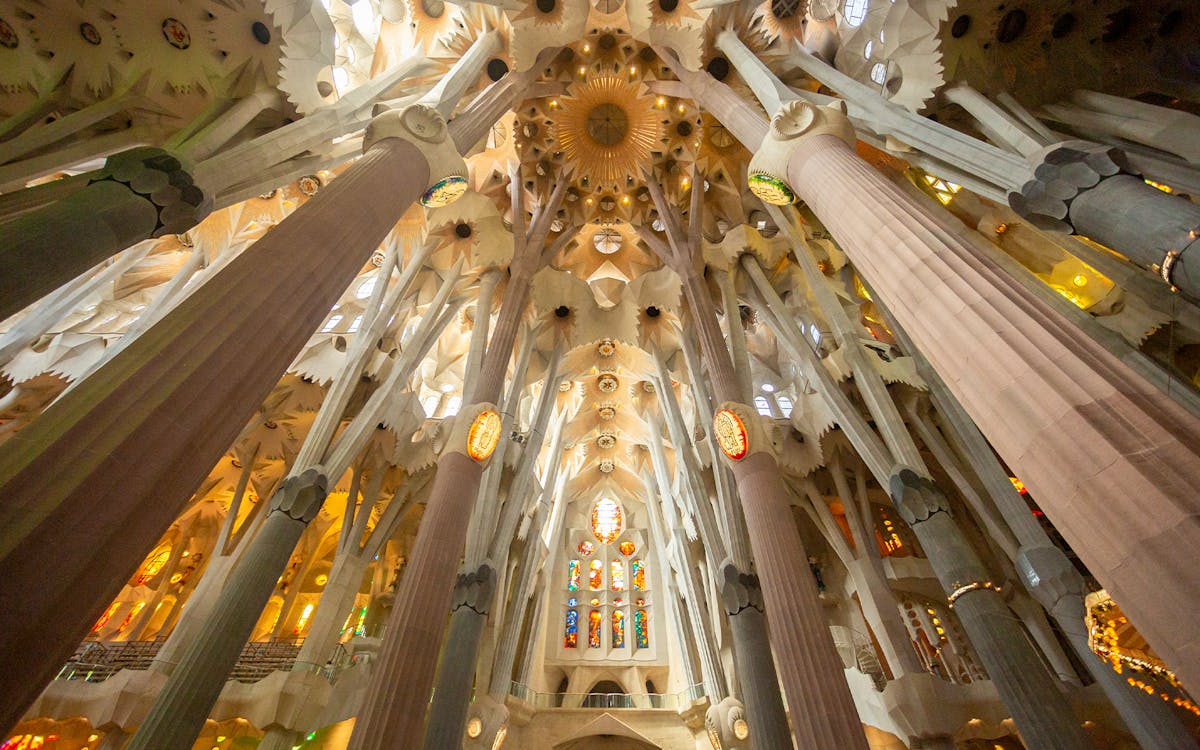
Sagrada Familia architecture
1 Floor plan
Sagrada Familia's floor plan is shaped like a Latin cross and pays homage to Gothic traditions while blazing its own trail. Three monumental façades - the main one at the foot and Nativity and Passion on the transepts - create a stunning visual impact. The interior features 36 tree-inspired columns supporting five naves, creating a forest-like atmosphere. The main nave soars above and connects to the transept. Behind the transept, you'll find the choir and altar, bathed in light from vibrant stained glass windows. The apse, perched above the crypt, houses seven chapels and twin staircases.
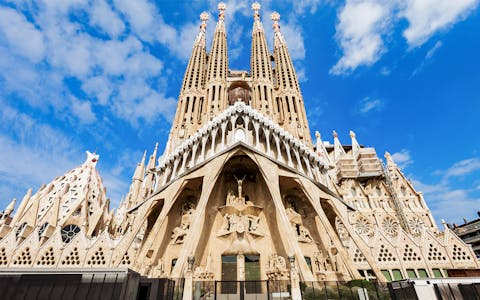
2Facades
Sagrada Familia boasts three facades, each a masterpiece of architectural storytelling. The Nativity Facade, the oldest, features intricate organic forms and lush sculptures, embodying life and nature. In contrast, the Passion Facade strikes a somber tone with its stark, angular design and haunting sculptures. The yet-to-be-completed Glory Facade promises to be the most grandiose, with plans for an elaborate entrance and vivid depictions of heavenly scenes. Each facade is supported by four towers reaching skyward. These facades aren't just decorative; they're integral to the basilica's structure, seamlessly blending form and function.
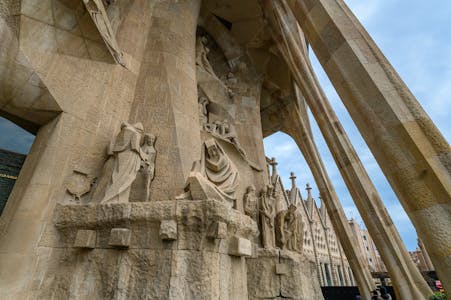
3The Spires
Sagrada Familia consists of 18 breathtaking towers, each with deep symbolism. Twelve shorter towers (about 100 meters tall) on each facade represent the apostles. The tallest, reaching 172.5 meters, symbolizes Jesus Christ. Four 135-meter towers, representing the Evangelists, surround it. A 138-meter tower, completed in 2021, stands for the Virgin Mary. This intricate arrangement is visually striking and forms a pyramid structure that draws the eye heavenward creating a sense of spiritual ascension.
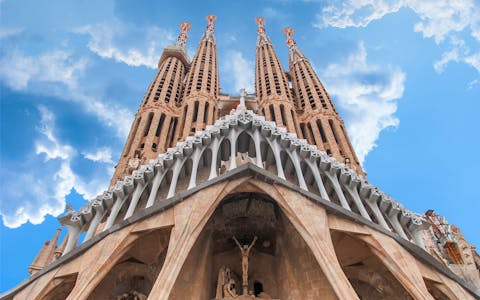
4Vaults & Columns
Sagrada Familia's vaults and columns showcase Gaudí's innovative approach to architecture. Unlike Gothic cathedrals reliant on buttresses, Gaudí used a weight-and-string model to design tree-like columns that efficiently distribute loads. These columns, inclined at precise angles, support their own "foliage" (vaults) independently, enhancing structural integrity. This design allows for straight exterior walls without Gothic-style perpendicular fins. Gaudí also revolutionized vaulting techniques. While Gothic vaults relied on hierarchical "nerves" to bear weight, Sagrada Familia's vaults distribute weight more evenly. The result is a forest-like interior where massive columns resemble trees, creating the illusion of a botanical garden.
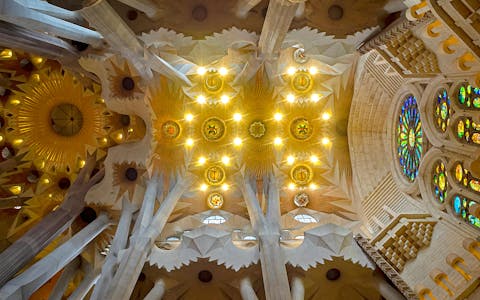
Explore more of Gaudi’s architecture
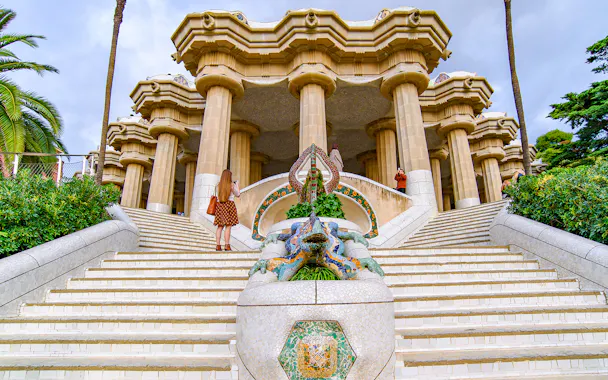
This whimsical public park showcases Gaudí's ingenuity and creativity through its vibrant mosaics, sinuous forms, and organic design. Originally intended as a residential project, Park Güell transformed into a city park, captivating visitors with its dragon stairway, serpentine bench, and imaginative structures.
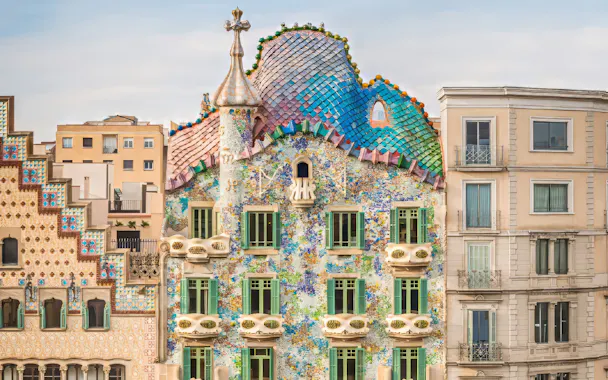
Casa Batlló is an iconic modernist building on Passeig de Gràcia. Known for its skeletal structure and vibrant tiles, it epitomizes Gaudí’s innovative spirit. The building features undulating shapes and a mosaic facade known as trencadís, creating a dynamic play of light and color.
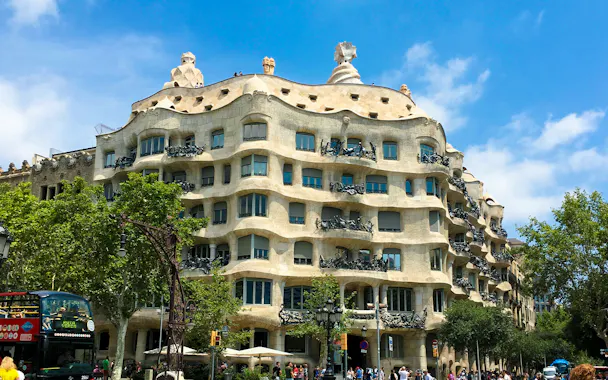
Also known as La Pedrera, Casa Milà showcases Gaudí's inventive genius with its undulating stone facade and wrought iron balconies. The interior features a light-filled courtyard and organic motifs inspired by nature. Gaudí’s innovative use of free-form shapes demonstrates a masterful blend of functionality and aesthetic.


